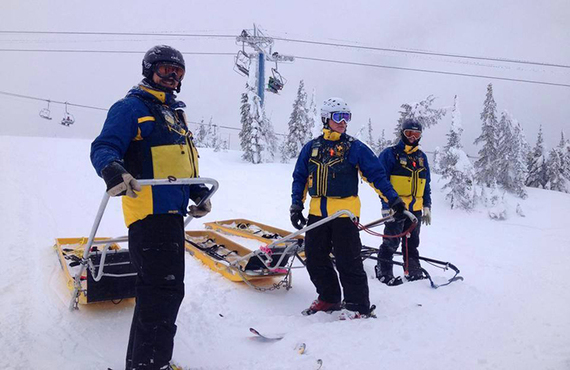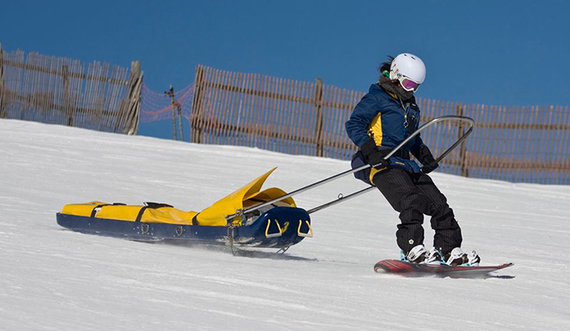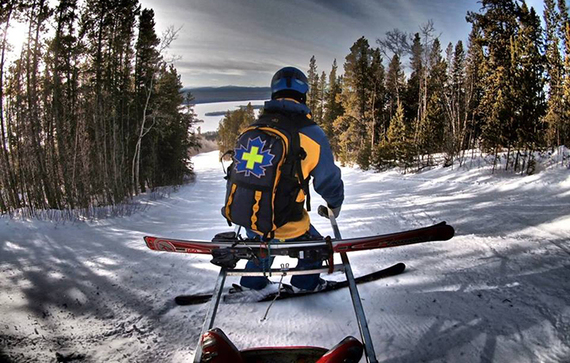The very quick and easy answer to the above title is -- Contact your local ski patrol to get more information on how to become a ski patroller.
The longer answer starts with the following question...
Do you have what it takes to become a ski patroller?
In a nutshell, your Ski Patrol works to promote ski safety, enforce ski area policies, and help injured skiers when necessary. To become a ski patroller, you really need to have the following traits: a desire to learn (advanced first aid training, safety procedures, protocols, etc.); a willingness to help others (applying first aid and offering other assistance); and a love of the outdoors (enjoy a day at the slopes and have above average skiing ability).
The Ski Patrol exists in many different countries around the world (including New Zealand and Scotland among others). Ski patrollers come from every age group (minimum 16 years old, but there are also patrollers with 40 years+ service and over 75 years of age). Patrollers come from virtually every walk of life--students, teachers, firemen, IT pros, business executives, etc. Ski patrollers can be snowboarders in addition to alpine, telemark, or Nordic skiers. Many patrols also have non-skiing positions whereby patrollers provide assistance in first aid rooms. So you can become a ski patroller in many parts of the world and you don't have to be a skier or boarder.
Joining the Ski Patrol is very much about the fun and the challenge. You learn and operate in a team environment and make a lot of new friends with lots in common. It's the perfect excuse to enjoy the winter outdoors on a regular basis and you get to ski for free!
What's the catch?
Naturally, a commitment is required. After you enlist, you are required to take an advanced first aid training course (the vast majority of new patrollers have no prior first aid experience). It's interesting and challenging with an opportunity to learn new skills. In addition, there is CPR and AED training. Once the snow flies, an on snow training module is required to learn the skills of moving a rescue toboggan with a loaded patient under different scenarios. During the ski season, you are required to cover patrol shifts (normally 1-2 per week) as part of your patrol's commitment to the resort, but you pick your schedule.
What are the benefits?
The benefits of joining the patrol are many. If you are still a student or just graduated, you earn volunteer hours and get a great addition to your resume. You get to be part of a valuable team and have ongoing professional development. At any age, it's personally rewarding to be a volunteer in your community and to help others. As in any organization, people come and go for a variety of reasons. So, the Patrol is almost always looking for new members.
Are you interested and ready to join the Ski Patrol? Start a conversation with a Ski Patroller the next time you are on the slopes. For more information on joining the Ski Patrol, visit the Canadian Ski Patrol (if you're from Canada), or visit the National Ski Patrol (if you're from the United States).
By Mark Crone / @Marktravel



